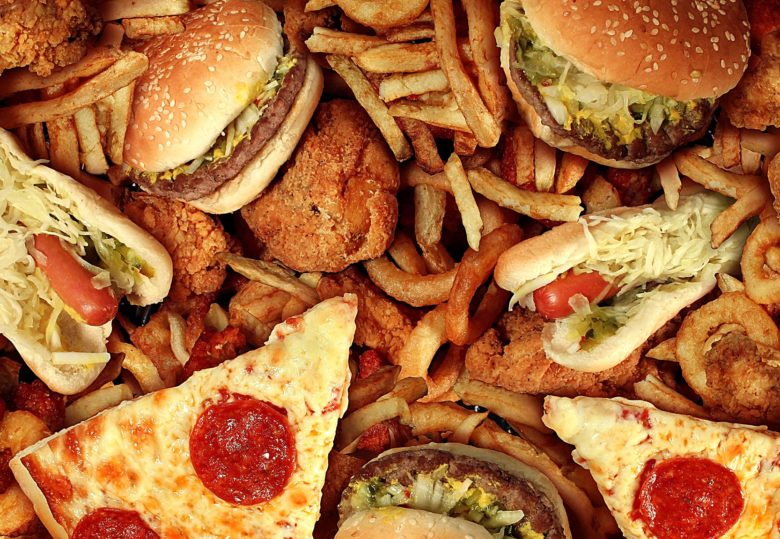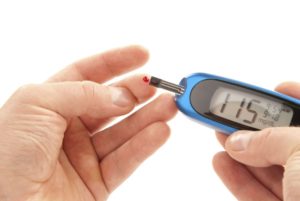Yes, you read it right, do not run away from fats in your diet as they are needed for your body to properly function, but this also doesn’t mean that we should run towards them.
This article would break down some basic information about fat, its types and functional benefits in our bodies, in order to know those compound a little bit more and to make our own balance, so let’s get right into it!
What is the definition of fat(s)?
Fats are members of the Lipids family, which are naturally occurring hydrophobic compounds found in plants and animals, this family of compounds also includes waxes, sterols, phospholipids and more.
Where are fats found?
As mentioned above, fats could be found in plants or animal products, and here are a few examples:

Why fats are good or even essential to us?
Our bodies need Fats, not only to store energy as it is widely known, but also for a range of other vital functions like the following:
Energy source
Each gram of fat provides 9 cal, which is double the calories amount stored in carbohydrates or proteins and quadruple the amount stored in Fibers
Keeping your cells together
Each and every cell in our body is wrapped by a structure called membrane, the function of the membrane is to protect internal cell bodies and to regulate substance exchange between the cell and body fluid, some types of fats and lipids are what make us these membranes.
Fatty acids keep your brain and vision in optimal condition
Fatty acids (which are the basic components (Lego bricks) of fats) make up 60% our brain cells, also some types of fatty acids are essential for the maturation of the retina and visual cortex. Those fatty acids, however, are not produced in our bodies so we have to obtain them through our diet
Carriers of Vitamins
Have you ever wondered why almost all salad dressings include oil, and especially olive oil? Well, the answer is that aside from enhancing the flavor, fats act as carriers to fat-soluble vitamins like A, D, E and K, and they further support their absorption in the intestine.
Types of fats
Just like vitamins, carbohydrates and any other type of nutrients, there are several types of fats, some are considered “Good” for your health, others are considered “Evil” while others are in between, below is a list of the major types of fats:

Trans Fat
Let us tackle the bad ones first, trans fats, there are two types of them depending on their source, the smaller portion of it is naturally occurring in the gut of some animals and foods made from these animals (e.g., milk and meat products), while the bigger chunk is man-made by transforming liquid oils into solids in a process called hydrogenation (hence the name hydrogenated or trans fats)
Trans fats can be found in: Doughnuts, baked goods including cakes (Especially
with frosting on top, pie crusts, biscuits, frozen pizza, cookies, crackers,
and stick margarine and other spreads.
Trans fats have NO clinically proven nutritional value at all, in fact, consuming them not only raises your bad (LDL) cholesterol levels and lowers your good ones (HDL), but also increases your risk of developing heart disease and stroke while pulling you closer to developing type 2 diabetes.
Using hydrogenated oils in some fast or fried foods satisfies the greed of business owners not only because those oils tend to make their products look and taste good but also that they can re-use these oils over and over again for an extended period of time as well as making the product to last longer on the shelves.
The verdict: This is the type of fat that you should be running away from, wherever you see Trans or hydrogenated fats or any similar wording on the label of the product do your best to avoid it, in fact, they are even restricted by law in the US!
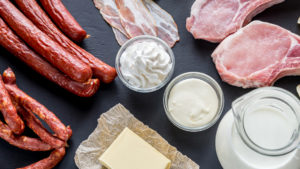
Saturated Fat
Moving on to the less dangerous – yet undesirable– type of fat which is the saturated fat, this type is found mainly in animal products like Fatty beef, lamb, poultry with skin, Animal fat (tallow), cream, butter, cheese and other dairy products made from whole or reduced-fat milk
As you might have noticed, some of the items above are really common in our daily diet, therefore, the recommendation from the American Heart Association says that we should consume a maximum of 13g (One tablespoon) a day of saturated fats, as increasing the amount can raise the level of cholesterol in your blood as well as increasing your risk of heart disease and stroke.
The verdict: Avoid them as much as possible by finding a healthier alternative, regulate them when consumed.
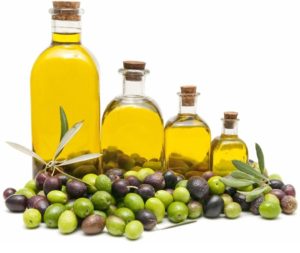
Mono-unsaturated fat
Now we are moving on to the “more healthy” side of the fats spectrum, Monounsaturated fats are made up of basic fat molecules and is normally found liquid at room temperature, they can help reduce bad cholesterol levels in the blood which can lower your risk of heart disease and stroke, provide nutrients to help develop and maintain our body’s cells when eaten in moderation and when used to replace saturated fat and trans fat in our diet.
Monounsaturated fats can be found in olive oil, canola oil, peanut oil, safflower oil, sesame oil, avocados, peanut butter, and many nuts and seeds.
The verdict: Our bodies need fats and monounsaturated fats are advised to be consumed as an alternative to Trans and saturated fats, however, they should also be regulated.
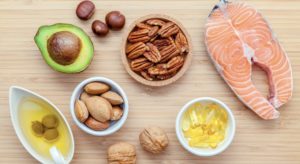
Poly-unsaturated Fat
Polyunsaturated fats are also products of nature that are found liquid at room temperature and tend to solidify when chilled, they can help in reducing bad cholesterol levels in the blood which can lower your risk of heart disease and stroke, they also provide nutrients to help develop and maintain our body’s cells. Oils rich in polyunsaturated fats also contribute vitamin E to the diet, an antioxidant vitamin most of us need more of.
Polyunsaturated fats can be found in soybean oil, corn oil, sunflower oil, walnuts, sunflower seeds, tofu and soybeans.
The verdict: This is also considered as a “healthier” alternative to Trans and saturated fat, therefore global organizations tend to encourage replacing bad fats with good fats such as polyunsaturated fats
Points to Highlight
- All the above-mentioned types of fat have the standard 9 calories per gram, so the classification of good and bad fats does not mean that one type has fewer calories than the other, it just means that there are some harmful and beneficial types of fat to the functions of our bodies.
- The AHA recommendation of fat intake for an adult is not to be more than 13g per day.
What is the relation between “Omega” and fats?
We hear the term Omega 3 a lot when it comes to food and nutrition, it is actually related to fat, the omega family belongs to Poly-unsaturated fatty acids – PUFA, and as we have seen earlier, fatty acids are the building block of fats. Also the Omega’s are a family and not only Omega 3, there is also Omega 6 and Omega 9, we don’t need to get into details here but the number associated with the term Omega is a representation of the location of the double carbon bond in the molecule.
Moderately consuming those fatty acids, and especially Omega 3 has been proven to lower the risk of heart diseases and is considered one of the main reason why almost all the global health organization are pushing people to intake seafood at least once a week. Here are some of the Omega fatty acid sources: Olive oil, fish oil, soybean oil, salmon, sardines and albacore tuna.
Eating only fats makes us fat?
Ok, let’s set something straight, eating fatty food makes us fat, eating sweet foods make us fat as well as eating refined carbohydrates, so what to do? The answer is simple, consuming food in controlled portions, meaning to consume all the necessary nutrients from the best possible sources just in the needed portion and not to completely cut down on a specific type.
Article’s bonus info
Frying food is quick, delicious and convenient, but it also adds some fats to our food, the good news is that we can determine which oil could be considered as a better alternative, below is a chart developed by the American institution of health that shows the percentage of saturated fats in the most common types of cooking oils and fats.
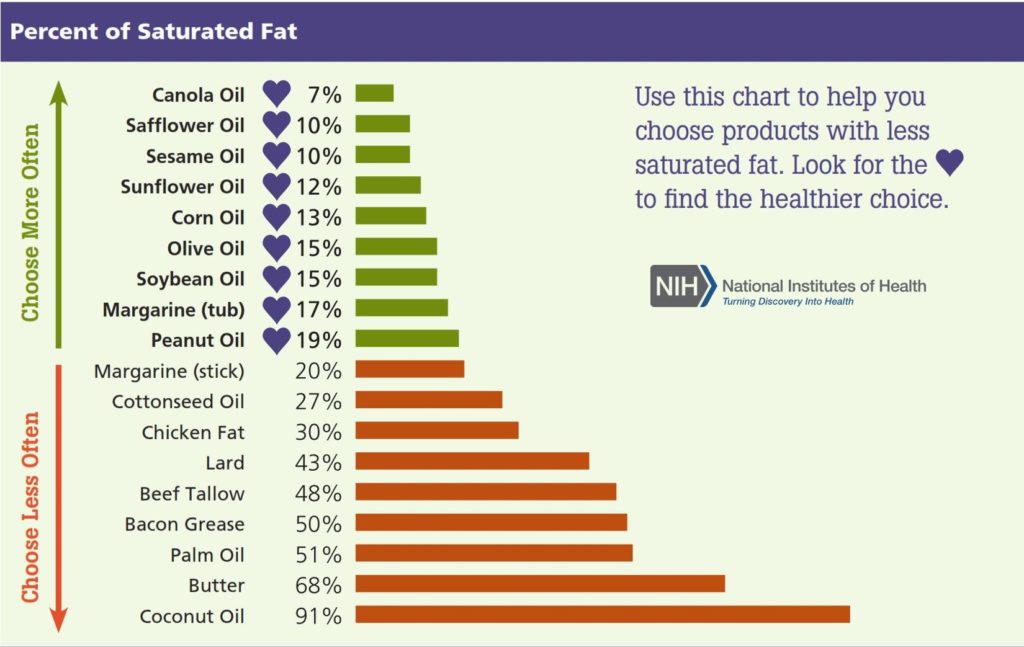
Stay Positive, Stay healthy, Stay grateful!
Back to Public Health Arena? click below
References:
Eichler Lab – Harvard Medical School - http://eichler.mgh.harvard.edu/introduction-to-lipids/
Harvard Medical School – https://www.health.harvard.edu/staying-healthy/the-truth-about-fats-bad-and-good
The European Food Information Council - https://www.eufic.org/en/whats-in-food/article/facts-on-fats-the-basics
The National library of medicine NBCI - https://www.ncbi.nlm.nih.gov/pubmed/20329590
American Heart Association AHA - http://www.heart.org/en/healthy-living/healthy-eating/eat-smart/fats/trans-fat
http://www.heart.org/en/healthy-living/healthy-eating/eat-smart/fats/polyunsaturated-fats
National Heart, Lung, and Blood Institute (NHLBI) - https://www.nhlbi.nih.gov/health/educational/wecan/downloads/tip-fats-and-oils.pdf
